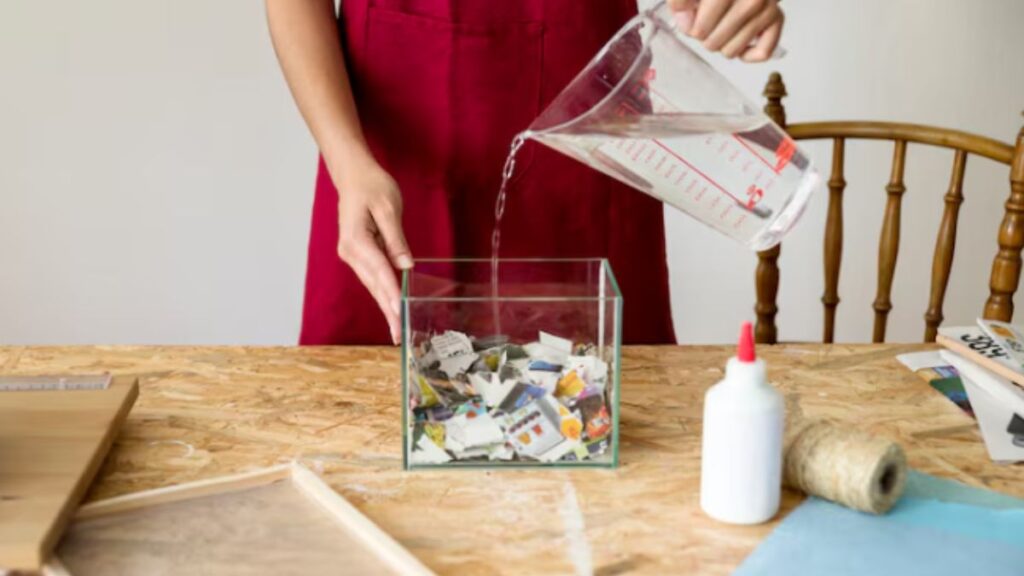Introduction to Recurbate
Have you ever looked at an old piece of furniture or a forgotten knick-knack and thought it still had potential? If so, welcome to the world of Recurbate! This trend is all about breathing new life into items that might otherwise end up in landfills. Whether it’s revamping a vintage chair or transforming jars into chic storage solutions, the possibilities are endless.
Recurbating isn’t just about recycling; it’s about creativity and sustainability. It’s an opportunity to express your style while making eco-conscious choices. As more people embrace this movement, we’re seeing a shift toward valuing imagination over consumerism. Ready to discover how you can join in on this exciting journey? Let’s dive deeper into what makes Recurbate such an impactful practice!
The Benefits of Recurbating
Recurbating offers a treasure trove of benefits, both for you and the environment. First, it promotes sustainability by reducing waste. Instead of tossing old items into landfills, you breathe new life into them.
Creativity flourishes when you’re recurbiting. Each project becomes an expression of your style and imagination. You can customize pieces to match your taste or decor.
Financial savings are another perk. Recurbated items often cost less than brand-new ones while providing similar functionality and aesthetics.
Additionally, there’s a sense of accomplishment that comes with transforming something old into something fresh and appealing. This hands-on approach fosters skills in crafting and design.
It’s rewarding to share your unique creations with others or even sell them online, connecting with like-minded individuals who appreciate the value of thoughtful repurposing.
Steps to Successfully Recurbing Items
Start by assessing the item you want to recurbrate. Look for flaws or wear and determine what can be fixed or enhanced. This initial evaluation helps set realistic goals.
Next, gather your supplies. Depending on the item, this could include paint, fabric, tools, or decorative elements. Having everything ready will streamline your process.
Plan your design before diving in. Sketch out ideas and choose a color palette that resonates with you. Visualizing the end product is crucial for a successful transformation.
As you work, take your time and enjoy the creative journey. Each step should feel satisfying rather than rushed.
Don’t shy away from experimenting! Mix techniques or combine materials to create something truly unique that reflects your personal style. Let your imagination guide you as you breathe new life into old items.
Common Items to Reuse and Revamp
Furniture pieces are excellent candidates for recurbating. A worn-out chair or a vintage dresser can transform into stunning statement items with just some paint and new upholstery.
Glass jars, often tossed aside, have endless potential. They can become chic storage solutions, candle holders, or even stylish vases. Just a bit of creativity goes a long way!
Old clothing isn’t just fabric waiting to be discarded; it can be reimagined into unique bags or quilts. Patchwork designs add character and keep memories alive.
Wood pallets are surprisingly versatile too. With minimal effort, they morph into rustic coffee tables or vertical gardens that bring life to any space.
Bookshelves can serve more than just as book storage; they evolve into eye-catching room dividers with creative styling. Let your imagination drive the transformation!
Tips for Selling Your Recurbated Items
When it comes to selling your recurbated items, presentation is key. Start by taking high-quality photos in good lighting. Capture multiple angles and showcase any unique details that highlight your craftsmanship.
Craft engaging descriptions that tell the story of each item. Explain the process you used to revamp it, including materials and techniques involved. Personal touches can make a significant difference.
Choose the right platform for selling. Online marketplaces like Etsy or local options like Facebook Marketplace work well for handmade goods.
Pricing should reflect both the time invested and market demand. Research similar items to find a competitive price point.
Promote your creations on social media channels. Share behind-the-scenes glimpses of your recurbating journey; this builds excitement among potential buyers while showcasing your creativity and dedication.
Inspiring Examples of Successful Recurbating Projects
Looking for some inspiration? Many creative minds have transformed discarded items into treasures.
Take an old wooden ladder, for instance. Instead of tossing it aside, a crafty individual turned it into a unique bookshelf. The rustic charm adds character to any room.
Another fantastic example is the makeover of vintage suitcases. A few coats of paint and some clever repurposing can create eye-catching storage solutions or even stylish coffee tables.
Then there’s furniture revamping. An outdated dresser can become a chic bathroom vanity with just a little creativity and effort. Some fresh paint and new hardware work wonders.
People are also finding innovative ways to use glass jars—turning them into beautiful pendant lights or herb planters that brighten up kitchens with personality.
These projects highlight the endless possibilities when we embrace the idea of giving old items new life through recurbiting.
Conclusion: Embracing the Trend of Sustainable Living through Recurbating
Recurbating is more than just a trend; it’s a lifestyle choice that aligns with the growing emphasis on sustainability. By breathing new life into old items, we not only reduce waste but also foster creativity and innovation. This practice allows individuals to express their unique style while being environmentally conscious.
As you embark on your own recurbating journey, remember the benefits it brings—not just to your living space but also to our planet. You’ll be amazed at how something considered outdated can transform into a beloved piece with minimal effort. Whether you’re repurposing furniture or redesigning clothing, each project tells a story of renewal.
The beauty of recurbating lies in its accessibility for everyone. You don’t need advanced skills or expensive materials; sometimes all it takes is imagination and determination. With countless resources available online, anyone can learn techniques that suit their needs.
Embracing this sustainable approach contributes positively to our environment and community spirit. So gather those forgotten treasures from your home and let them inspire you toward creative endeavors that reflect both personal taste and eco-consciousness!
Recurbate Explained: How to Give New Life to Old Items
In a world that often feels overwhelmed by fast fashion and disposable goods, a new trend is emerging: Recurbate. This innovative practice breathes new life into old items, transforming them from forgotten relics into cherished treasures. But what exactly does it mean to recurbate? Imagine taking an outdated piece of furniture or clothing and giving it a fresh twist—whether through repair, upcycling, or creative redesign. As sustainability becomes increasingly important in our daily lives, more people are embracing the art of recurbating as not just an eco-friendly choice but also a way to express their creativity and individuality.
This blog post will explore why recurbate is trending now more than ever and how you can easily get started with this fulfilling endeavor. So grab your tools and open your mind; it’s time to dive into the exciting world of recurbating!
What is Recurbate and Why is it Trending?
Recurbate is all about reviving and transforming old items, turning them into something functional or beautiful again. This practice blends creativity and sustainability, allowing individuals to give new life to discarded belongings.
The trend has gained momentum in recent years as people seek alternatives to consumerism. With the rise of eco-consciousness, many are looking for ways to reduce waste while still enjoying unique possessions.
Social media platforms have played a significant role in popularizing recurbating. Influencers and DIY enthusiasts share their projects, inspiring others to rethink what they can do with items that might otherwise end up in landfills.
Additionally, there’s a sense of community surrounding this movement. Enthusiasts connect over shared interests, exchanging tips and showcasing their creations. Recurbating encourages collaboration and inspires innovation among those eager to make a positive impact on both their lives and the planet.
The Benefits of Recurbating
Recurbating breathes new life into old items, promoting creativity and sustainability. It allows you to express your personal style while reducing waste.
By choosing to recurbate, you contribute to a circular economy. This means less landfill waste and fewer resources consumed in manufacturing new products.
Financially, recurbating can save money. Instead of purchasing brand-new items, revitalizing what you already own often costs significantly less.
Additionally, there’s a sense of pride that comes with creating something unique. Each project tells a story and reflects your vision.
Not to mention the bonding experience it fosters if done with friends or family. Sharing tips and techniques enhances relationships while encouraging collaboration on projects.
Embracing this trend increases awareness about sustainable practices. It inspires others to think twice before tossing out their belongings.






